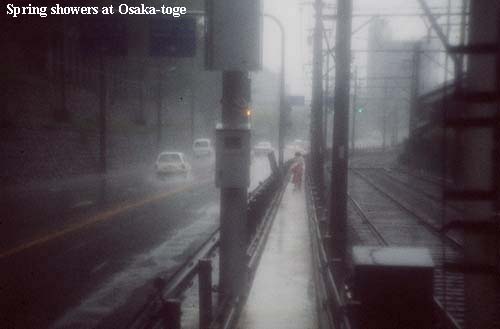Japan is known as a land of earthquakes and volcanoes but, except for rare catastrophic events such as the 1923 Great Kanto Earthquake, the greatest danger from nature is normally associated with Japan’s climate.

Heavy rain is the most persistent cause of death through natural disaster, regularly accounting for the lives of between 30 and 50 people each year. Most commonly these occur at the end of the tsuyu rainy season in late June or early July, and during the passage of typhoons over Japan during late summer and fall. Kyushu is the area most severely affected, due to its proximity to the warm sub-tropical influences of the central Pacific. The heavy rains trigger landslides, usually up to 4000 each year, which are the main agent of death and destruction. Heavy snowfall on the Japan Sea coast of Japan can also result in death, through building collapse under the sheer weight of snow, or by avalanche.
Improved building techniques and better facilities for predicting bad weather have helped reduce the death toll in recent years, although it is unlikely the threat will ever disappear entirely. Certainly the situation today is vastly better than it was in the Edo period, when climatic disaster could lead to famine and result in the deaths of tens of thousands. Too much rain or, conversely, insufficient rain could often lead to crop failure and mass starvation. Altogether there were three great famines in the Edo period, from 1732 – 1733 (the Kyoho famine), from 1783 – 1787 (the Temmei famine), and from 1832 – 1836 (the Tempo famine). George Samson in his 3-volume History of Japan cites a samurai account of some of the hardships suffered during the Temmei famine:
… the loss of life through starvation in the northern provinces was dreadful. There was nothing to eat but horseflesh or, when this ran short, dogs and cats. Once these were consumed people died of sheer starvation in great numbers. In some villages of thirty, forty, or fifty households not one person survived, and nobody could say who had died or when, for the corpses were unburied and had been eaten by beasts and birds.

